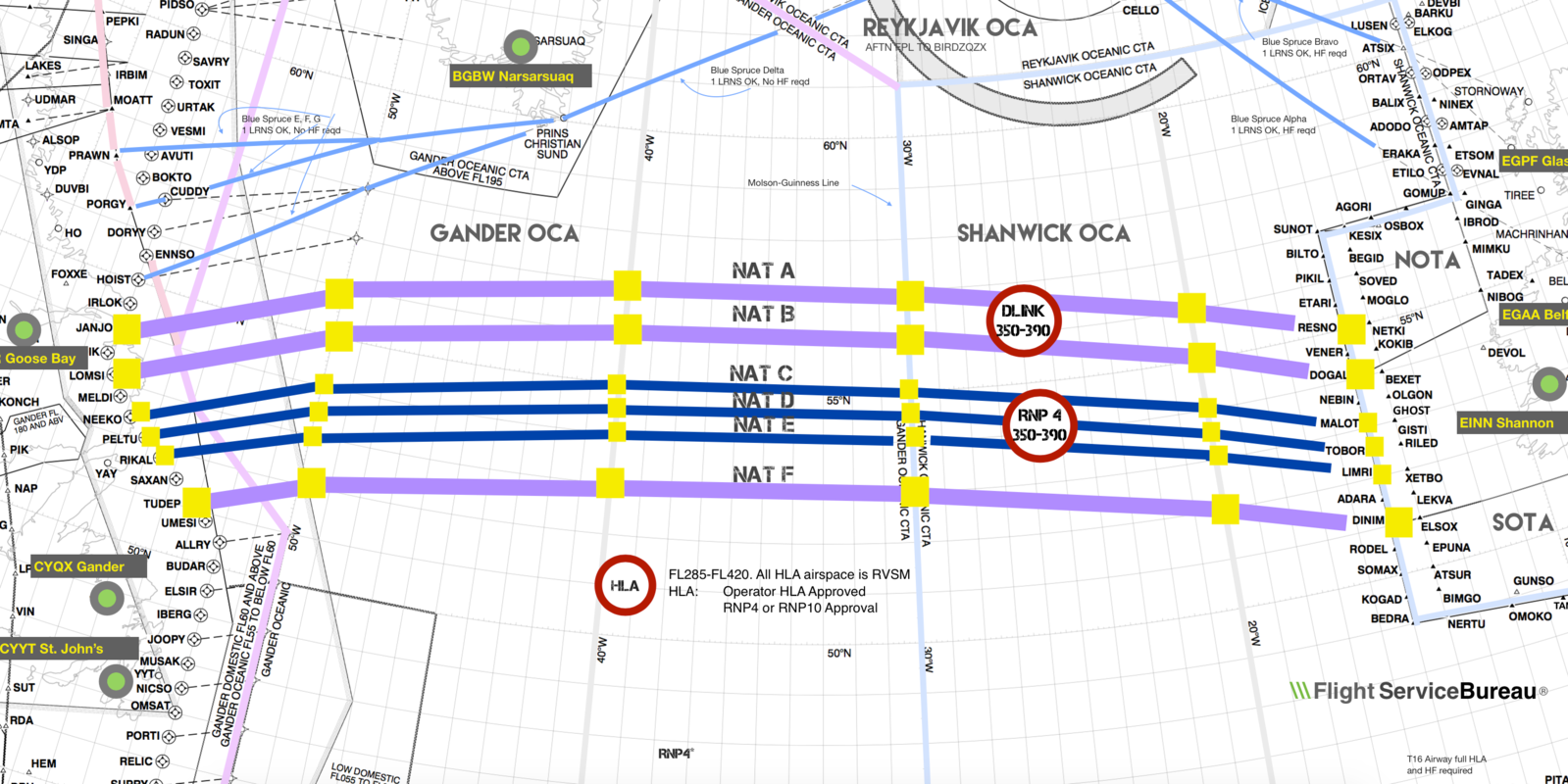North Atlantic Tracks, or as they are officially called, the North Atlantic Organised Track System (NAT-OTS), are a set of flight path tracks between North America and Europe, stretching across the North Atlantic Airspace region. It is like a transparent motorway in the sky, where planes follow each other in multiple lanes. Each day up to twelve tracks are created to the east and west, designed to take advantage of prevailing jet streams.
From March 1st, operators will be able to fly outside the structured tracks when flying below 33,000 feet. This will allow airlines more flexibility, as they can file routes not previously accessible for transatlantic flights. The new efficiency-boosting opportunities have come about as a result of the introduction of the Aireon near-real-time satellite-based ADS-B system by UK and Canadian air traffic control in 2019.
The new system allows air traffic controllers to receive updates on aircraft locations every seven or eight seconds, as opposed to the previous 14 or so minutes. This allows the minimum separation of aircraft for safety reasons to drop from c.40NM to 14NM, UK leading ATC service provider NATS reports.
OTS Nil experiment made possible by pandemic
The OTS has remained mostly unchanged since the 1960s. However, the precipitous drop in transatlantic traffic over the past two years (from 1,700 daily movements to 200) provided the perfect opportunity to try out different solutions.
On March 9th, 2021, for the first time since the system's inception, there were no westbound tracks across the North Atlantic. Since then, there have been another 20 'OTS Nil' days. Airlines and ATC are currently working together to analyze the results and benefits of random routes.
While the results are still not in, and there need to be more simulations of abolishing the OTS on higher-traffic days, one impactful change is already emerging from the experiment. Starting in a little over two weeks, anyone operating below FL330 will be able to do so free from the lane structure. Jacob Young, Manager for Operational Performance at NATS, explains,
“Even though there have never been any restrictions on flight planning in relation to random routes crossing the OTS, some airline operators have internal systems or procedures that prevent them from filing across OTS tracks with active flight levels. This change means anyone operating at those levels will have the flexibility to file a random route plan and choose the trajectory that suits them.”
Increase in efficiency and reduction of emissions to be gained
It is not just airlines that stand to gain financially by being able to choose more efficient routes according to their needs. While the world is waiting for zero-emissions technologies such as hydrogen-electric aircraft, one of the low-hanging emission-reducing fruits most often identified by researchers is the modernization and optimization of air traffic control and flight planning.
Several software companies, such as SATAVIA, SITA, and Open Airlines, are providing AI-driven flight mapping solutions to increase efficiency and save fuel. Meanwhile, the potential introduction of the Single European Sky is said to reduce greenhouse gas emissions by 10% in one swoop.

.jpg)

